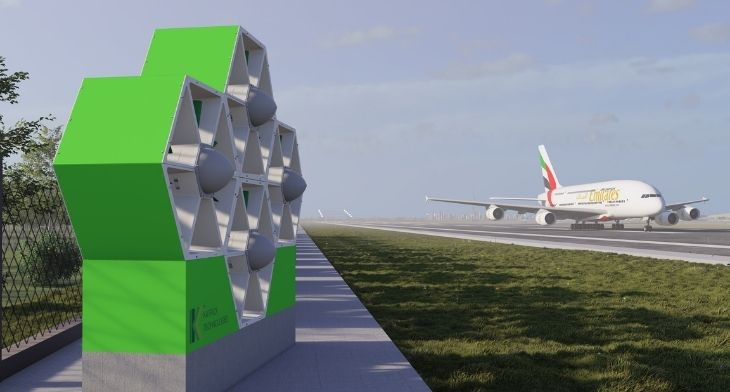


A consortium involving AGS Airports (which encompasses Aberdeen, Glasgow and Southampton airports in the UK), Katrick Technologies and the University of Strathclyde, has been formed to support the design and development of renewable technology. The aim is to produce carbon-neutral energy from previously unharnessed power and enable a faster transition to clean power by exploiting low-level wind energy.
AGS has long been committed to carbon reduction. In 2020 the airports group achieved carbon neutrality status, while earlier this year it launched its Sustainability Strategy, which outlined its commitment to achieving net-zero by the mid-2030s.
The consortium’s mission to deploy renewable technology will involve the installation of Katrick Technologies’ dual-purpose wind panel and sound barrier, which can produce carbon-neutral energy from ground and low-level wind. Meanwhile the University of Strathclyde’s climate-neutral districts vision, will see renewable technologies used across its central Scotland facilities. The team is already helping to deliver the university’s first carbon-neutral building.
Core to the consortium is Katrick Technologies’ dual-purpose wind panel and sound barrier, which can produce carbon-neutral energy from ground and low-level wind. The energy-harvesting wind panels have been designed to tackle the decarbonisation challenges common to both airports and highways – unlike traditional wind turbines they can capture wind power, without needing significant height or scale. These wind acquisition systems will be installed at Glasgow Airport, as well as on the University of Strathclyde estate.
“Partnering with technology experts and embracing innovation is essential for AGS to meet its decarbonisation goals,” explained Derek Provan, CEO of AGS Airports. “Renewable technologies have the potential to power vast amounts of on-site equipment, offset energy costs and reduce the requirement for carbon-based energy supply. In addition to supporting our transition to net zero, these wind panels also have the potential to help us manage the impact of airport-related noise which we know is an important issue for the communities we serve. Managing this is an integral part of how we grow our airports responsibly and these panels could also act as noise barriers on our airfields.”





